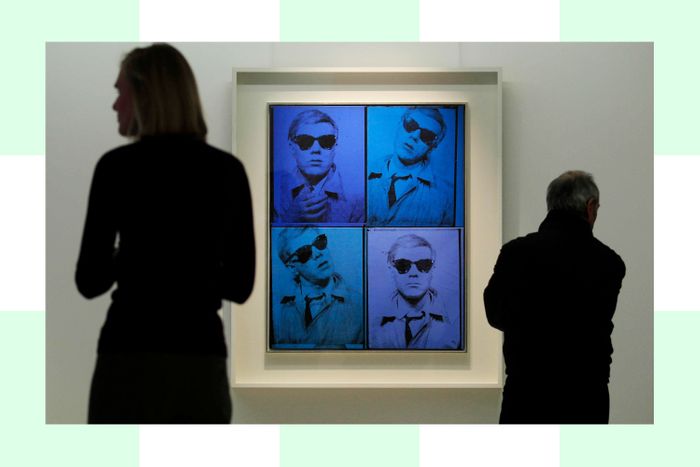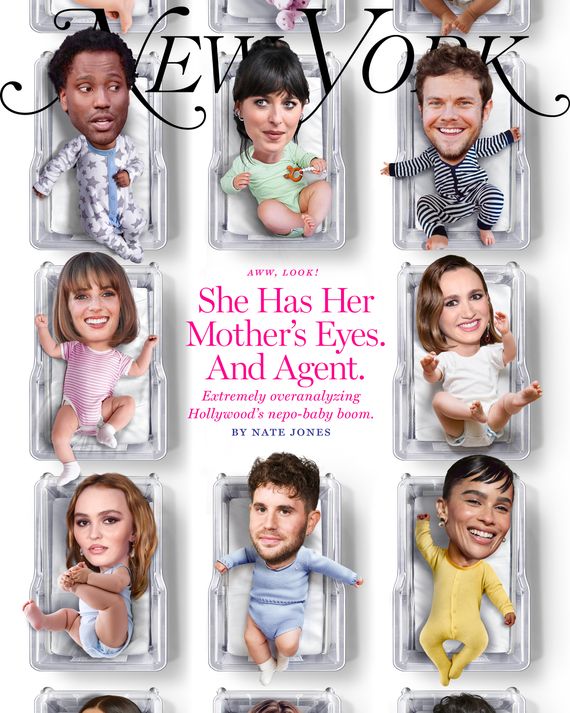
Up in the art-market stratosphere, where the price estimates for art auctions start in the tens of millions, billionaires trade around pieces by the same few artists — Koons, Picasso, Basquiat — and build each other’s wealth. This is practically a closed circuit: Dealers buy up the supply of an artist’s work, selling it for whatever price they see fit. Collectors bid on pieces at auction just to keep the value of their own inventory high.
It helps, then, if an aspiring dealer to the 0.1 percent is born into a family that already owns a bunker of blue-chip art, which is why many of the biggest dealers today are family businesses. And in New York, much power is concentrated in just five families — whose fate now rests in the hands of their second-, even fifth-generation heirs. Some of these art-world nepo babies are staying the course, founding their own galleries or taking over their parents’; others have been embroiled in legal trouble and messy divorces. Few are scandal-free.
.
The Mugrabis: The Other Warhol Factory
Origin story: During the economic crisis of the 1980s, the Israeli-born textile importer Jose Mugrabi took advice from a Citibank art consultant (and future big-time dealer) Jeffrey Deitch to invest in bargain-priced art. Mugrabi took to Andy Warhol in particular, whom he saw as a symbol of American empire. The family is now worth an estimated $5 billion.
Reign: 30 years; two generations
Market cornered: Warhol. The family owns an estimated 800 works by the artist.
The heirs: Jose’s son Alberto “Tico” Mugrabi got his start in the art business at 18; his older brother David Mugrabi joined after a stint on Wall Street.
Scandals: David and Libbie Mugrabi’s tabloid 2019 divorce involved allegations of adulterous skinny-dipping, a brawl over a Keith Haring sculpture, and a rumored $100 million payout.
.
The Nahmads: The Art Market’s Charles Schwab
Origin story: The sons of a Syrian banking family in Italy, Ezra and David Nahmad got their start flipping art as teenagers in the 1960s. Today, the billionaire family treats its collection of at least 4,000 works like the stock market, buying and holding — sometimes for decades in a tax-free Geneva warehouse — then selling when prices are high. “Monet and Picasso are like Microsoft and Coca-Cola,” David once said.
Reign: 70 years; two generations
Market cornered: Picasso. The Nahmads own an estimated 300 works by the artist, worth at least $1 billion — the largest collection outside the Picasso family.
The heirs: David’s eldest son, Hillel “Helly” Nahmad, runs a gallery in the Carlyle Hotel; Joe Nahmad has a contemporary-art space across the street. Daughter Marielle, a socialite who married banking scion Edmond Safra, shows more interest in philanthropy than the art business. (Confusingly, Ezra also has two dealer sons named Helly and Joe Nahmad in London.)
Scandals: In 2013, Helly Nahmad — the American one — pleaded guilty to operating a $100 million gambling ring frequented by Leonardo DiCaprio. (Then-US attorney Preet Bharara said it also had connections to Russian-American organized crime.) Helly was sentenced to 366 days in prison and ordered to pay a $30,000 fine. Donald Trump later pardoned him.
.
The Levais: The Original Mega-Gallerists
Origin story: Before Larry Gagosian and David Zwirner, there was Franz Levai. The Austrian son of an antique-dealing family, Levai, who anglicized his name to Frank Lloyd, cofounded the first multinational gallery empire, Marlborough, starting with a branch in London. At its peak, it would have additional branches in Rome, New York, Montreal, Toronto, and Zurich. (The remaining branches are now in New York, London, Madrid, and Barcelona.)
Reign: 75 years; three generations
Market cornered: Abstract expressionism. In its heyday, the gallery represented every major figure from the movement, including the painters Mark Rothko, Robert Motherwell, and Philip Guston.
The heirs: Max Levai, great-nephew of Lloyd, became president of Marlborough New York in 2019 — only to be fired a year later when the London branch of the family ousted him and his father, Pierre. Today, Max runs The Ranch, an indoor-outdoor gallery space in Montauk.
Scandals: Many. Frank Lloyd lost the Rothko estate after a major lawsuit in the 1970s. (Pace Gallery eventually scooped it up.) In 2020, Max sued the gallery for $10 million for allegedly taking advantage of his father’s battle with COVID-19 and other pandemic-related issues to stage its “coup.” The gallery countersued, accusing the Levais of fraud, defamation, and “an unfounded sense of entitlement.”
.
The Wildensteins: Old Masters of the Universe
Origin story: The longest-running and most scandalous art dynasty in the world dates back to the 1870s, when an Alsatian tailor named Nathan Wildenstein started trading Old Master paintings on the side. Today, his great-grandson Guy Wildenstein leads the multibillion-dollar empire.
Reign: 150 years; five generations
The heirs: In addition to Guy running the operation, his daughter Vanessa Wildenstein directs their London gallery Wildenstein & Co., while his son David Wildenstein, Guy’s heir apparent, is expanding the family’s real-estate business.
Market cornered: Old masters and impressionists, especially Monet — Daniel Wildenstein, Guy’s father, authored the artist’s catalogue raisonné.
Scandals: Many. In 2011, French investigators accused Guy of receiving art looted by Nazis, some of which, he said, could have been an “oversight” of his late father’s operations. Prior to and since, there have been separate open, closed, and reopened tax-fraud cases against him by French authorities. In 1999, Jocelyn Wildenstein, better known as “Catwoman” for her extensive plastic surgeries, revealed offshore accounts during her divorce from Guy’s brother Alec Wildenstein, winning her a reported $2.5 billion settlement.
.
The Glimchers: Million-Dollar Babies
Origin story: In 1960, a 22-year-old MFA student named Arne Glimcher opened a gallery in Boston called Pace. Three years later he moved it to New York, where he staged early shows by the likes of Jean Dubuffet, Agnes Martin, and Robert Irwin. In 1980, Pace sold Jasper Johns’s Three Flags, becoming the first gallery to sell a work by a living artist for more than $1 million. Now it’s one of the biggest and most influential contemporary art spaces in the world.
Reign: 60 years; two generations
Market cornered: Pace has held on to many of the lucrative estates of artists it has worked with in the past, including Sol LeWitt, Chuck Close, and Louise Nevelson.
The heir: After years veering between careers in science and art, Arne’s son Marc Glimcher took the helm as Pace’s CEO in 2011.
Scandals: In 2020, in the wake of the protests over the murder of George Floyd, Artnet News reported that Marc infuriated employees by hiring his own kid, Lilleth, to oversee diversity at the company. The next year, two top executives left Pace after the gallery investigated allegations of misconduct against them. The Glimchers have taken pains to avoid controversy — in 2010, Arne dissolved the gallery’s 17-year partnership with the increasingly embattled Wildenstein & Co. But it’s hard to work in art without things getting ugly.
Correction: This story has been updated to clarify Helly Nahmad’s alleged links to organized crime.
More on the year of the nepo baby
- We’re Making Nepo-Baby Merch for Actual Babies
- These Magazines Ran on Nepo Babies
- How a Nepo Baby Is Born


